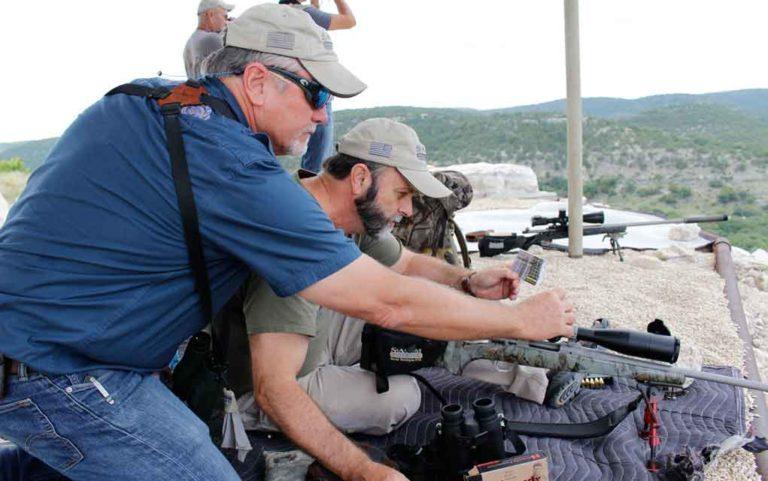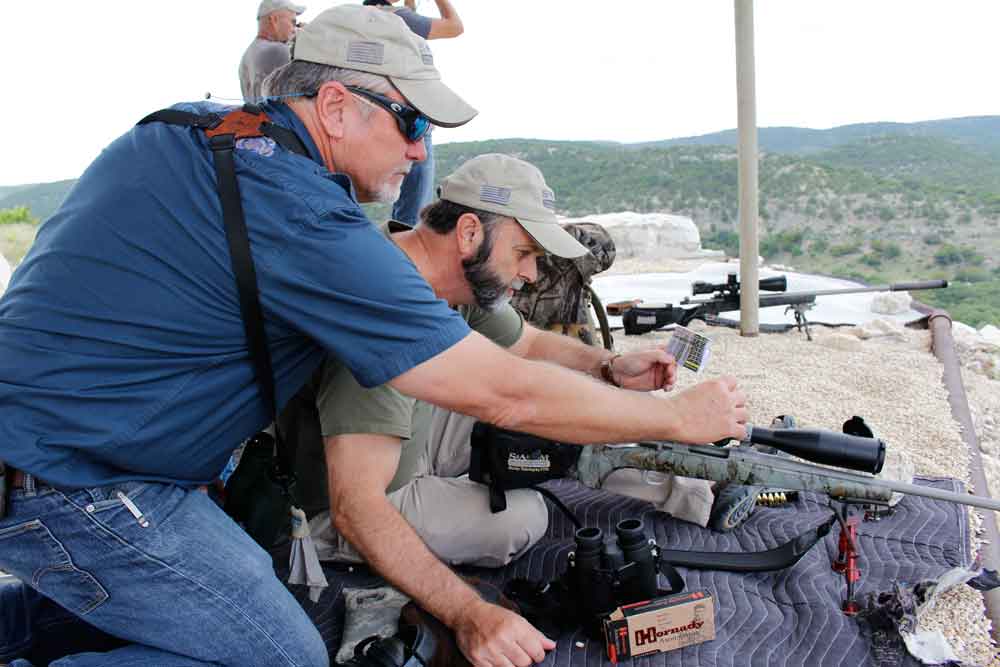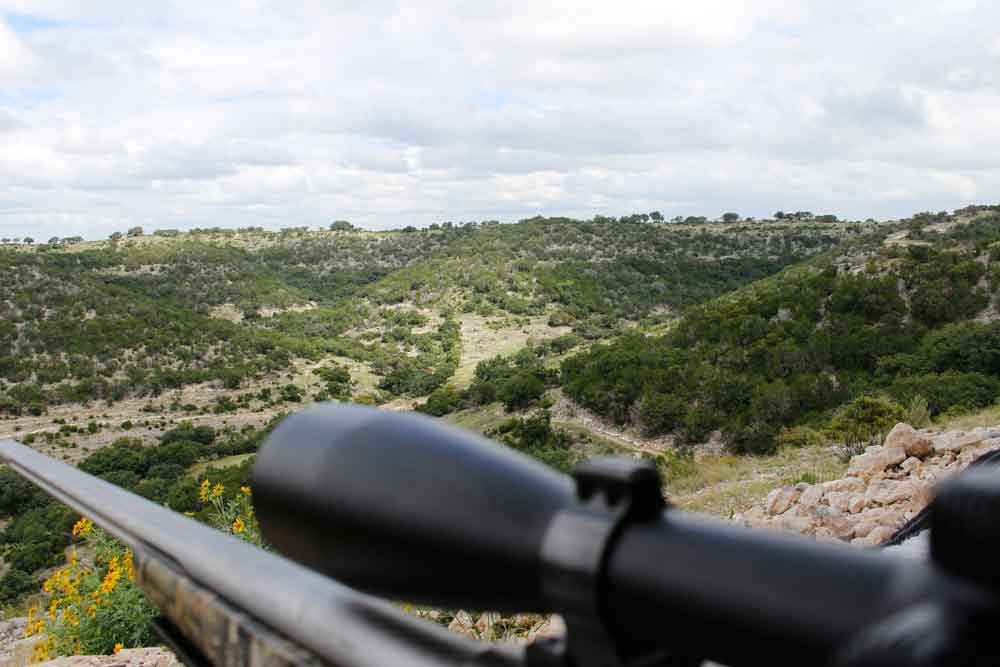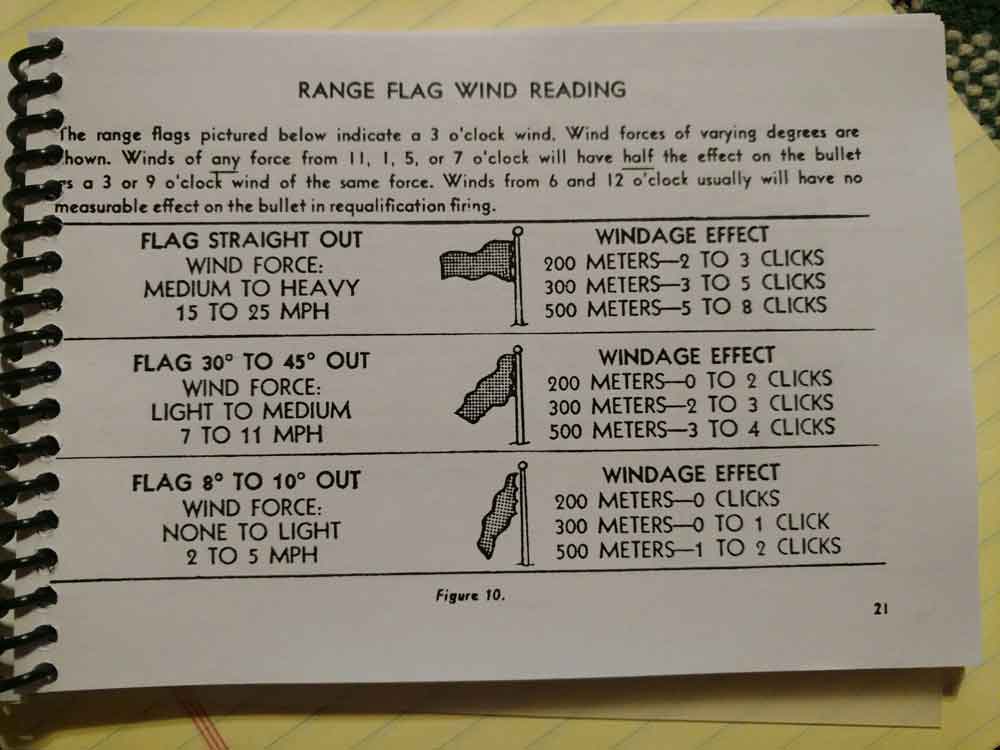
As with all aspects of shooting, particularly at long range, learning to properly read the wind requires practice and familiarity with the basics.
How can you use natural environmental elements to help read the wind and make adjustments?
- Mirage, which refers to the way light rays are bent due to the heat difference of the ground and the air, can be used, if they're moving, to help illustrate wind direction and intensity.
- Grass, leaves, tree branches and other flora are good indicators of wind speed and direction.
- If you're hunting in a foreign environment, use a windmeter to measure values and their effects on flora; then, you can estimate wind values at range based on the amount of movement of that particular plant.
- Canyons can prove particularly challenging, especially if compound winds are present. Make sure you understand how canyon walls affect wind currents.
No matter what you’re shooting, you need to know how to read the wind. It’s certainly not an easy prospect, especially as the distances get long.
Yes, a Kestrel weather meter or similar tool will accurately indicate both the wind speed and direction in relation to the target. This is definitely good information, but it is only a part of the puzzle.
There will invariably be shooting situations where the wind at the target is completely different from the wind at your location. Couple that with variations in terrain, elevation and weather conditions, and you’ve got quite a chore on your hands.
 Understanding how to read the wind is no easy task. I recently had the honor of spending quite a bit of time beside Doug “Dog” Pritchard, an ex-Navy Seal who is not only one helluva shot, but also an expert at calling wind.
Understanding how to read the wind is no easy task. I recently had the honor of spending quite a bit of time beside Doug “Dog” Pritchard, an ex-Navy Seal who is not only one helluva shot, but also an expert at calling wind.
I got to play the role of both shooter and spotter with him, as I wanted to concentrate on learning to call wind for other shooters as much as shoot the long distances available at the FTW Ranch. It didn’t take long for me to figure out what Pritchard was basing his calls on, and why.
We’d look through the spotting scopes, observing several key indicators and comparing them to the wind directions and values we were feeling at our location. Pritchard explained how he unravels the mystery, using little clues presented by nature, as well as knowledge of terrain and how winds behave in canyons and valleys.
I can’t imagine a more difficult set of scenarios than those presented at the FTW Ranch. Tim Fallon & Company have handpicked some incredible shooting challenges that present steep angles, long distances and impossible wind conditions. Some of these targets combine all three factors — to an extreme degree — and really test the skill set of any experienced shooter.
The Barksdale area of Texas is canyon country, and the daily temperature differentials cause the winds to swirl, gust, calm down and pick back up in a matter of minutes. We had to use every available piece of evidence to determine correct calls.
We’d look for blowing grass, fluttering leaves; hell, we’d even use the butterflies to find out what was going on. Mirage, if present, was a definite help, as was the flight pattern of buzzards and other birds riding the winds and thermals.
Using Mirage
Mirage is a phenomenon in which light rays are bent due to the heat difference of the ground and the air; if you’ve ever seen the heat shimmer on hot asphalt, you’ve seen mirage. You can use those bent light rays and the direction they’re moving (if at all) to help with wind observations.
Looking through your spotting scope, if you see the lines of mirage “boiling” or running vertically, you can assume a zero- to 3-mph wind value. If running at 45 degrees or so, you can assume a 3- to 5-mph wind value. If it looks as if it’s running horizontally, but slightly broken up, your wind value will be 5 to 8 mph, and if it’s running horizontally in a straight, consistent manner, you’ve got 8 mph and up, and will be able to determine the factor with other methods.
Mirage is most visible on a bright, sunny day. At FTW, when we had trouble picking up mirage, we’d use the spotting scope to focus on a point closer to the target, and like magic, the mirage would appear. Even so, it is useful only under certain conditions, so you need other clues to help make the correct wind call.
 Natural Clues
Natural Clues
Grass is always helpful, as it is easily moved by the slightest winds. A 3-mph wind will move the grass, and a 5-mph wind will move grass significantly.
Leaves are another aid that can save the day. If you’re hunting in an area like Texas, where much of the vegetation holds its leaves year-round, you have many good indicators, but what if you’re hunting the Tioga, or the wide-open crop fields of the northern U.S.? Odds are there will always be something to gauge the wind velocity, even if it’s the remnants of last autumn’s leaves or the top of one of the stunted evergreens that grow at higher latitudes.
If you’re a traveling hunter, and you’re in a new environment where the foliage and vegetation seem foreign, a handheld weather station will come in very handy. If you watch the wind’s effects on the new flora, and measure that value with your wind meter, it will give you a much better idea of what the values will be while you are hunting. Cedar trees are a great indicator, as the tops act like a wind flag, and if you know what the wind speed is for certain movements, you’ll more than likely be right.
Putting It Into Use
If you’ve got some trees with full leaves, you can quickly ascertain wind direction — even in light winds — by determining if there is movement on one side of the tree or the other. Pritchard and I were discussing, well, debating — OK, we were nearly arguing — about a particular shot and what the wind values should be. I had (I thought) followed all the proper procedures, and made a call of “no wind,” and had instructed the shooter to hold the left edge of the 6-inch plate, to give the proper adjustment for spin drift at that distance.
“Nope, have him go right at it. You’ve got some right-to-left down there; it’ll compensate for the spin drift.”
I looked again, and again, and it wasn’t there. I saw a butterfly float by, just as happy as could be, about half way to the target, and I couldn’t pick up any mirage, so I didn’t know what he was getting at.
“Where are you seeing wind, Dog? I got nuthin’.”
“See that live oak, about 15 yards left of and above the plate? Watch those leaves just on the right edge; they’re blowing ever so slightly at the top. Because of the bullet arc (the target was 700 yards out), that slight right-to-left wind will cancel the spin drift.”
Dammit, I didn’t see it, and in my effort to shine in front of the Professor, I didn’t think to look at the top of the tree, in order to compensate for the entire trajectory arc of the bullet. The shooter held for the center of the plate, and I watched the paint splatter one-inch to the left of center.
Professor Dog had given a clinic, and I learned my lesson. My wind call would’ve pushed that bullet off the left side of the plate.
 Conflicting Wind Currents
Conflicting Wind Currents
Calling wind into or across a valley can pose a different set of problems. If hunting or shooting in canyon country, the wind can behave much like water. You might see signs of wind on top of the hills, and though it may appear dead calm at the bottom of the valley, there might be wind acting much like a waterfall — rushing over one edge and creating an eddy of moving air along the wall of the canyon.
I learned this hard lesson at the ranch when we were set up on a range that predominately worked perpendicular to the bottom of the valley, but had two targets running roughly parallel to the valley wall. The most difficult shot was an 18-inch plate at 585 yards, along that wall.
Where that plate was placed, the wall of the canyon got steeper than where we were shooting. The winds were just everywhere, if that makes any sense.
Looking from our shooting position, it was clear the winds were hard, right to left, coming into the canyon, but I saw the slight left to right just in front of the target. It was a compound wind, definitely two different scenarios on the way to the target.
I was shooting for this exercise, but Pritchard insisted that I call my own wind. I looked and studied the scene, studied and looked some more, and decided the predominant right-to-left wind would take precedence. I adjusted my hold into that right wind and touched one off.
In proud fashion, Pritchard announced a miss, two feet off the plate’s right edge. The wind was curling like water at the bottom of the valley, and rolling left to right.
Once it was explained, I shot the plate with no issue, but had that been a game animal, I’d have either completely missed it or — worse yet — wounded it.
These ideas, and other visual clues in the hunting fields, are what the SAAM course at the FTW is all about. Other shooting situations there, especially on the longer shooting ranges, employed a multitude of flags to indicate both wind direction and intensity. It’s quite easy to understand what a great aid this is to any shooter, especially when you’ve got a good dope card or Kestrel unit at your side.
 Working Out The Basics
Working Out The Basics
My good buddy Donnie Thorne served our country in the U.S. Marine Corps, as a machine gunner in Viet Nam. During basic training, he shot “Expert” and attained the highest score in his platoon. I asked him to recall what he could about his training — it’s funny how Marines never seem to forget that training — and he answered my inquiries as if he’d returned from basic two weeks ago.
“We were trained with the M14 rifle in 7.62 NATO, but spent days, literally days, with an empty rifle, practicing the proper sighting technique on a 55-gallon drum, with small black dots painted on it,” Thorne recalled. “Sight alignment, in various positions from kneeling to sitting to standing to prone, was demonstrated and taught for hours on end. We’d mark targets for other recruits, and then return to sight practice. I only got to fire live ammunition the day before qualification. We were allotted 50 rounds, to the best of my recollection, for practice. On qualification day, we shot targets at 200, 300 and 500 yards. I shot 228 out of a possible 250, earning the title of Expert, even landing 50 out of 50 at the 500-yard target.
 “For wind compensation,” he continued, “we were taught to dial a certain amount on the windage adjustment of the rear peep sight, and the range flags would indicate both direction of wind and its speed, based on the distance out from the flag pole. Obviously, the stronger the wind, the farther from the pole it will blow the flag, and we would adjust our wind hold based on the flag values. Our instruction booklet would give us the values, and the correlating rifle sight adjustments.
“For wind compensation,” he continued, “we were taught to dial a certain amount on the windage adjustment of the rear peep sight, and the range flags would indicate both direction of wind and its speed, based on the distance out from the flag pole. Obviously, the stronger the wind, the farther from the pole it will blow the flag, and we would adjust our wind hold based on the flag values. Our instruction booklet would give us the values, and the correlating rifle sight adjustments.
“It’s funny, learning trigger control and reading the wind in the Corps definitely helped me as a hunter; it also had a direct influence on my passion for single-shot rifles. I love a good target-style .22 Long Rifle, with a peep sight and a long sighting radius, as well as big-game rifles like the Ruger No. 1. Having just one shot, and the patience and precision to make it count, are things I attribute to the Marine Corps. I love the improvements in modern riflescopes and bullets, but at 66, I’m not much of gadget guy. I prefer relying on my training and practice, and if it’s too far, I like to get closer.”
Personally, I used to avoid shooting my rifles on really windy days, as the group size would start to fall apart. These days, I actually prefer to shoot in the wind, once the rifle and the load are proven, to better hone my wind calling skills.
I like to observe how the trees and grass are moving, measure those values with my Kestrel, and make mental notes to keep myself sharp. If you practice enough, it becomes second nature, and while there are difficult situations like I’ve described earlier, the more wind calling you do, the smaller the amount of error will become.
But, just as it is with all shooting, calling the wind will require constant mental exercise; you can’t do it once or twice a year and remain proficient. Wind is a predictable effect, assuming the values are known and things are constant. Making correct adjustments to overcome those effects — that’s the key to successful shooting.
Editor's Note: This article is an excerpt from the Big Book of Ballistics.

Next Step: Get your FREE Printable Target Pack
Enhance your shooting precision with our 62 MOA Targets, perfect for rifles and handguns. Crafted in collaboration with Storm Tactical for accuracy and versatility.
Subscribe to the Gun Digest email newsletter and get your downloadable target pack sent straight to your inbox. Stay updated with the latest firearms info in the industry.








